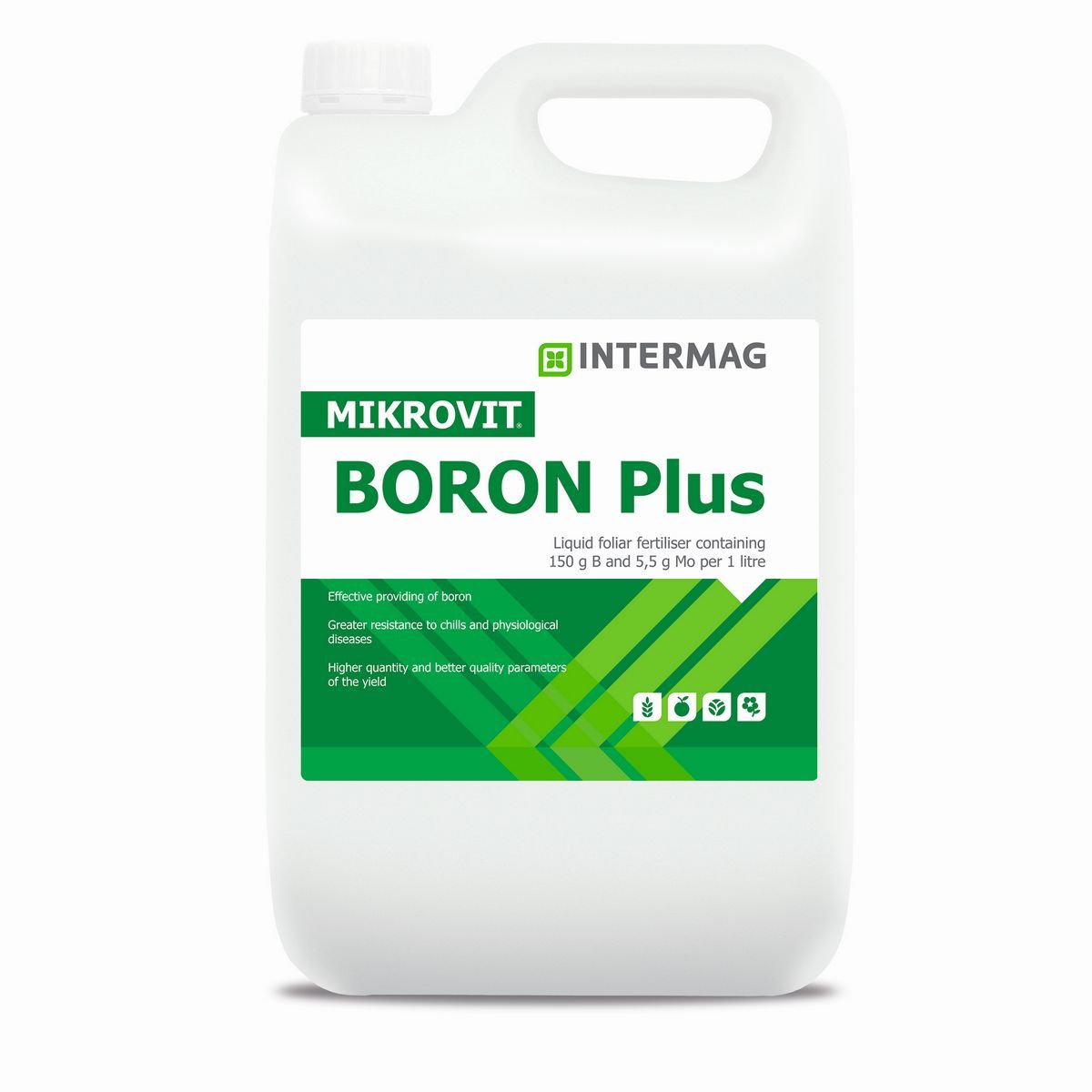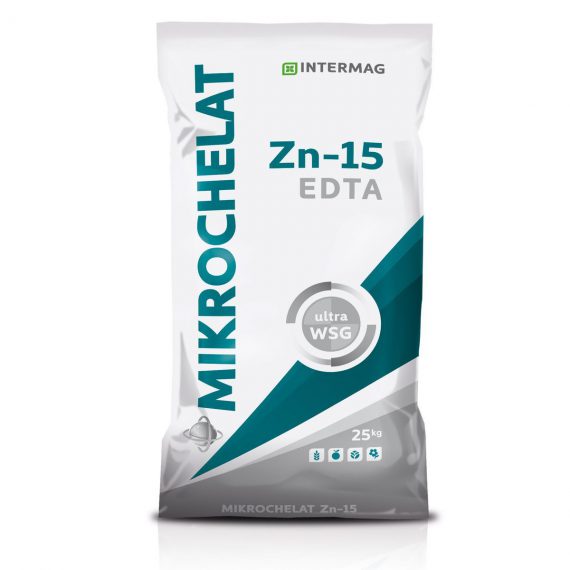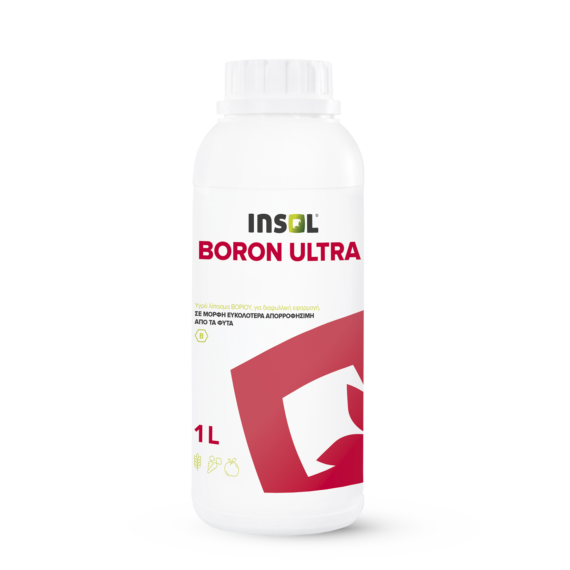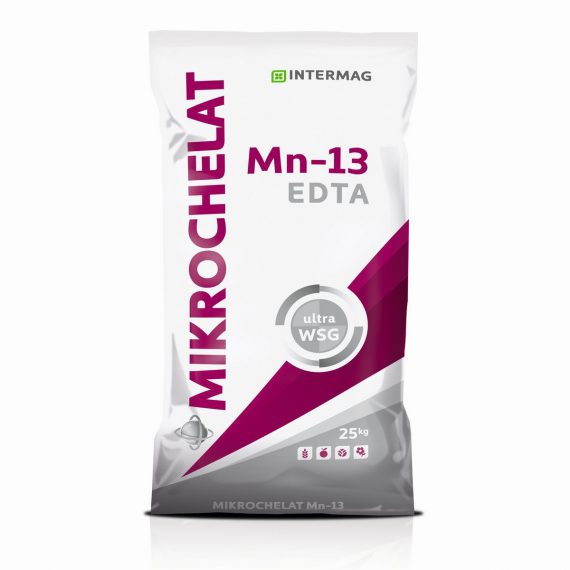| Nutrient content | % (w/w) | g/l |
| Boron (B) water soluble | 11,0 | 150 |
| Molybdenum (Mo) water soluble | 0,4 | 5,5 |
Mikrovit boron plus
Liquid molybdenum fertilizer for foliar application or with hydro-lubrication. It is recommended for fast metabolism of nitrates and for hormonal balance and promotion of maturation, especially in crops in acidic soils and especially in those that show high needs for molybdenum such as rapeseed, cruciferous, squash, legumes, cereals, or. In winter crops, it is recommended to apply in autumn, in order to increase the resistance of the plants to the low winter temperatures.
|
CROPS |
APPLICATION PERIOD |
QUANTITY FOR ONE TIME |
|
| MIKROVIT BORON Plus [ml/acre] |
Spray solution [lit/acre |
||
|
SUGAR BEETS |
I: stage 4–8 leaves (BBCH 14–18); II: 9 or more sheets, start closing of rows (BBCH 19–31); III: row overlap (BBCH 32–35) In plantations with large boron deficiencies, an additional 3–4 operations are recommended every 7 days. |
100–150
|
20–30 lit/ acre spray with fine drops or 5–20 lit / acre with small volume sprayers
|
| POTATO |
I: from the formation of the main lateral shoots to the complete closure of the rows (BBCH 21–39); II: tuber formation – reaching 20–30% of their final size (BBCH 42–43); III: tuber formation achieving 50–70% of their final size (BBCH 45–47) |
||
| COTTON |
I: from growth of first 4 leaves to development of lateral shoots (BBCH 14–29); II: central stem development – comb growth principle (BBCH 35–52); III: beginning of flowering (BBCH 61–63) |
||
| CORN |
I: stage 2–6 leaves (BBCH 12–16) optimal time of operation is 4 leaves? II: leaf growth – plant growth principle (shoot elongation) (BBCH 17–31); III: stem growth (stem elongation) – inflorescence growth principle (BBCH 31–51) if plant height allows spraying. |
50–150
|
|
|
APPLES, PEARS, QUYDONIA, RADIO |
spring: I: green bud – separation of closed flowers, just before the pink bud (BBCH 56); II: beginning of flowering (BBCH 60–63); III: end of flowering, almost all the petals have fallen (BBCH 67) summer: beginning of ripening-coloring of fruits (BBCH 81) autumn: two operations starting in the first week after harvest, every 10–14 days (BBCH 91–93) |
100–150
|
50–100 lit / acre spray with fine drops or 20–50 lit / acre with small volume sprayers
|
|
CHERRY, CRUISES PEACHES APRICOTS, PLUMS, ALMONDS |
I: white bud (BBCH 57–59); II: beginning of flowering (BBCH 60–64) III: end of flowering (BBCH 67–69) summer: beginning of fruit ripening-staining (BBCH 81) autumn 1–2 operations starting in the first week after harvest, every 10 days (BBCH 91–92) |
||
| CITRUS |
I: swelling-bud growth-visible but closed flowers (BBCH 51–55); II: beginning of flowering (BBCH 61–63); |
||
| OLIVE |
I: closed inflorescence development (BBCH 52–55); II: beginning of flowering before full bloom (BBCH 60–61); III: end of flowering (BBCH 67–69); IV: immediately after harvest (BBCH 90) |
||
| GRAPE | I: έναρξη ανθοφορίας (BBCH 61); II: 7–10 ημέρες αργότερα |
50–150
|
40–60 lit / acre spray with fine drops or 20–40 lit / acre with small volume sprayer
|
| STRAWBERRY |
I: appearance of first closed buds – balloon stage: the petals of the first flowers before opening form a balloon (BBCH 57–58); II: flowering (BBCH 60–65); III: end of flowering – fall of most petals (BBCH 67) |
||
| TOMATO,PEPPER,
EGGPLANT |
I: 7–9 true leaves have grown on the central shoot (BBCH 17–19); II: visible 1–3 flower arrangements (BBCH 51–53); III: beginning of flowering: the first 1–3 flowers bloom open (BBCH 61–63); IV: visible 4–6 flower arrangements (BBCH 54–56) |
||
| CUCUMBER,MELON,
WATER MELON |
I: appearance of first row lateral sprouting (BBCH 21–29); II: the elongated ovary of 1–2 flowers is visible in the central shoot (BBCH 51–52); III: the elongated ovary of 6–7 flowers is visible in the central shoot (BBCH 56–57) |
||
| LEAFLE VEGETABLES |
I: stage 5–7 leaves (BBCH 15–17); II: stage 7 cards – stage 9 or more (BBCH 17–19) |






